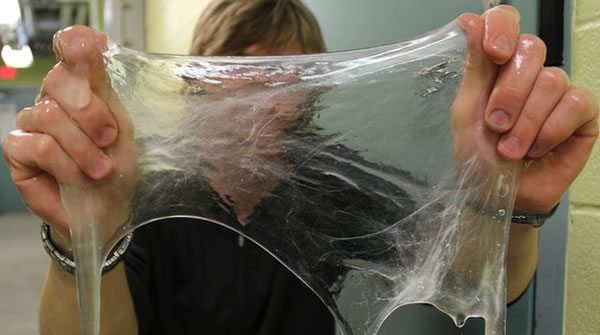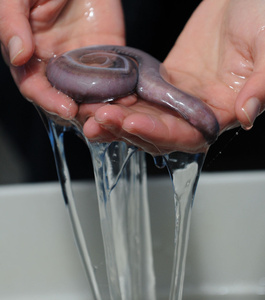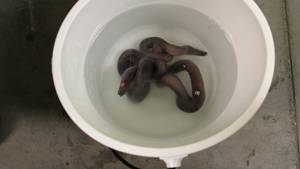Hagfish Slime Could Become Future Eco-Friendly Clothes
Source: theworld.org
Scientists developing today’s high-tech products often look to nature for ideas. Velcro was inspired by the tiny barbs on plant seeds, and the shape of Japan’s bullet train was inspired by the beak of a kingfisher. Now some Canadian scientists are studying a natural material from the oceans that might inspire the clothing of the future. Anna Rothschild of our partner program NOVA reports.At the University of Guelph in Ontario, Canada, a large blue building sits in the middle of campus. A room inside is filled with giant fish tanks.
Biologist Tim Winegard walks over to a tank that holds what look like eels. He dips a wooden pole in the water to fish one out.
 Hagfish are not true fish. They do not have backbones. |
He removes his hand from the bucket and displays a thick mass of clear mucus. “There’s a pretty impressive volume of slime there,” he says.
Hagfish produce a lot of slime. It serves as a form of defense.

Hagfish are not true fish. They are more primitive creatures that have been around for perhaps 500 million years. They don’t have jaws, so they have evolved their own way to protect themselves from predators – like sharks. In fact, some scientists recently recorded videos of sharks attacking hagfish.
When a shark tries to bite a hagfish, its mouth and gills are covered with slime. “The slime and the fibers that are within it clog the gill surface of [the shark],” says Winegard, “which causes them potentially to suffocate, but definitely to abort the attack.”
Useful Properties
 It turns out that hagfish slime may have uses for people, too.
It turns out that hagfish slime may have uses for people, too.The slime is composed of thread-like fibers.
“When you stretch the fibers in water and then dry them out they take on properties that are very silk-like,” says Douglas Fudge, who heads this research project at the University of Guelph.
Hagfish fibers are incredibly thin and extremely strong, and that gave Fudge and his colleagues an idea.
For years, scientists have been looking for natural alternatives to synthetic fiber like nylon and spandex that are made from oil, which is a nonrenewable resource.
In contrast, hagfish threads are made from proteins.
“Proteins are a renewable resource because we can get organisms to make them,” says Fudge.
No one has made a spool of hagfish thread yet, but Fudge and his team see a future where hagfish slime or similar proteins could be turned into high-performance, eco-friendly clothing. The fibers might be used for stockings or breathable athletic wear or even bullet-proof vests.
[...]
Read the full article at: theworld.org






















